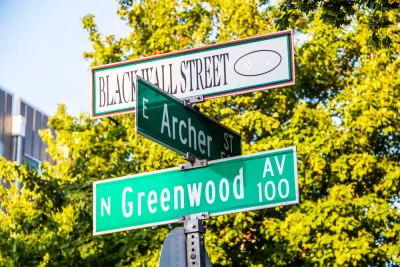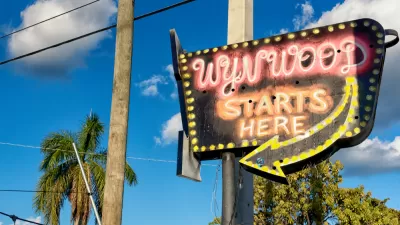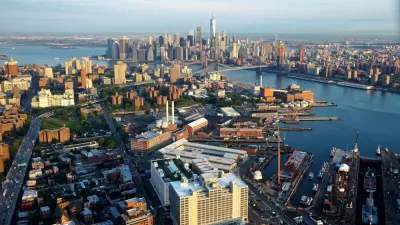Jose Richard Aviles says community comes first in the planner-community relationship.

Social work and urban planning have a closer relationship than one might think. Studying social work, Jose Richard Aviles came to understand that "the summation of individual trauma is often community trauma." Through that concept, Aviles began to treat the city as a client.
According to Aviles, the role of the planner is to heal the trauma held in communities by way of addressing the injustice at the core of the issue. Drawing on three concepts used in social work, Aviles describes how strengths perspective, countertransference, and case management can be applied in the planning field.
In Aviles' view, the community comes first. Rather than trying to "change" a community, planners should call on the strengths of community leaders. Similarly, planners shouldn't let their own training inflate their sense of purpose within a community. "Lived experiences should be leveraged and seen as truth, even when planners can't connect with them. Remember: we are of service, not to be serviced," says Aviles.
Aviles calls on planners to take a page from the social worker's book by spending more time in the "termination" phase of a project to double and triple check that everything is going according to plan.
"After a project is complete, planners should still be engaging with community members to ensure that the desired results have been reached and residents are content," Aviles writes.
Adhering to these principles, planners can work to undo racist policies and improve the quality of life of the communities with which they work.
FULL STORY: Planners as Therapists, Cities as Clients

Planetizen Federal Action Tracker
A weekly monitor of how Trump’s orders and actions are impacting planners and planning in America.

Congressman Proposes Bill to Rename DC Metro “Trump Train”
The Make Autorail Great Again Act would withhold federal funding to the system until the Washington Metropolitan Area Transit Authority (WMATA), rebrands as the Washington Metropolitan Authority for Greater Access (WMAGA).

The Simple Legislative Tool Transforming Vacant Downtowns
In California, Michigan and Georgia, an easy win is bringing dollars — and delight — back to city centers.

The States Losing Rural Delivery Rooms at an Alarming Pace
In some states, as few as 9% of rural hospitals still deliver babies. As a result, rising pre-term births, no adequate pre-term care and "harrowing" close calls are a growing reality.

The Small South Asian Republic Going all in on EVs
Thanks to one simple policy change less than five years ago, 65% of new cars in this Himalayan country are now electric.

DC Backpedals on Bike Lane Protection, Swaps Barriers for Paint
Citing aesthetic concerns, the city is removing the concrete barriers and flexposts that once separated Arizona Avenue cyclists from motor vehicles.
Urban Design for Planners 1: Software Tools
This six-course series explores essential urban design concepts using open source software and equips planners with the tools they need to participate fully in the urban design process.
Planning for Universal Design
Learn the tools for implementing Universal Design in planning regulations.
Smith Gee Studio
City of Charlotte
City of Camden Redevelopment Agency
City of Astoria
Transportation Research & Education Center (TREC) at Portland State University
US High Speed Rail Association
City of Camden Redevelopment Agency
Municipality of Princeton (NJ)





























